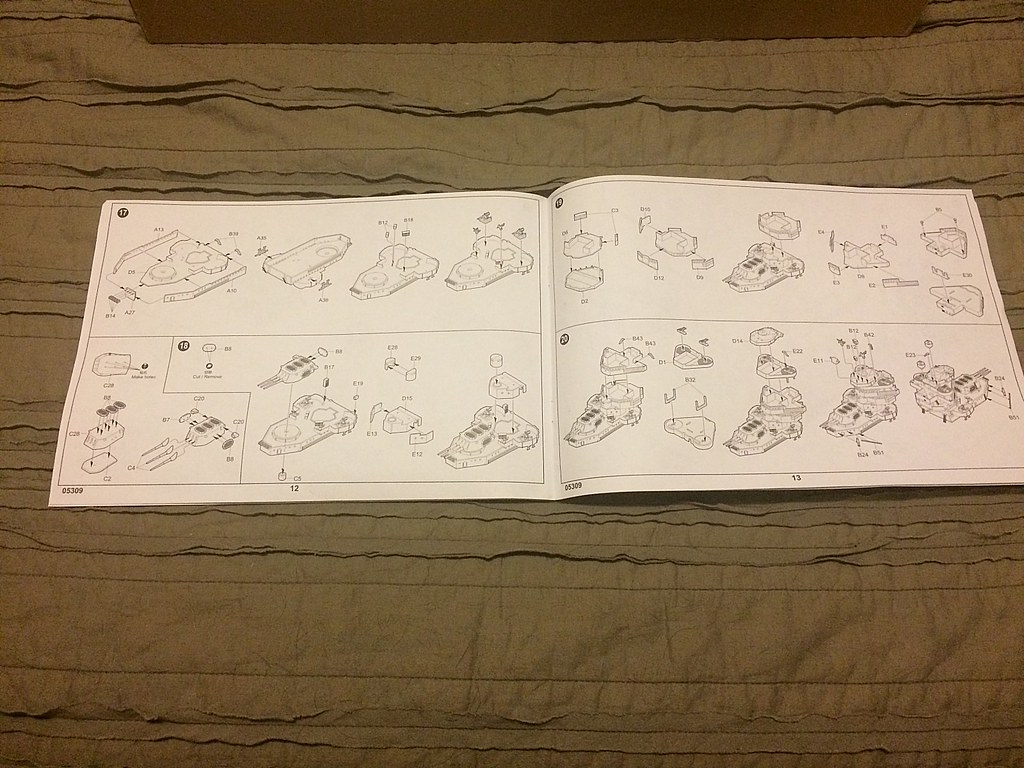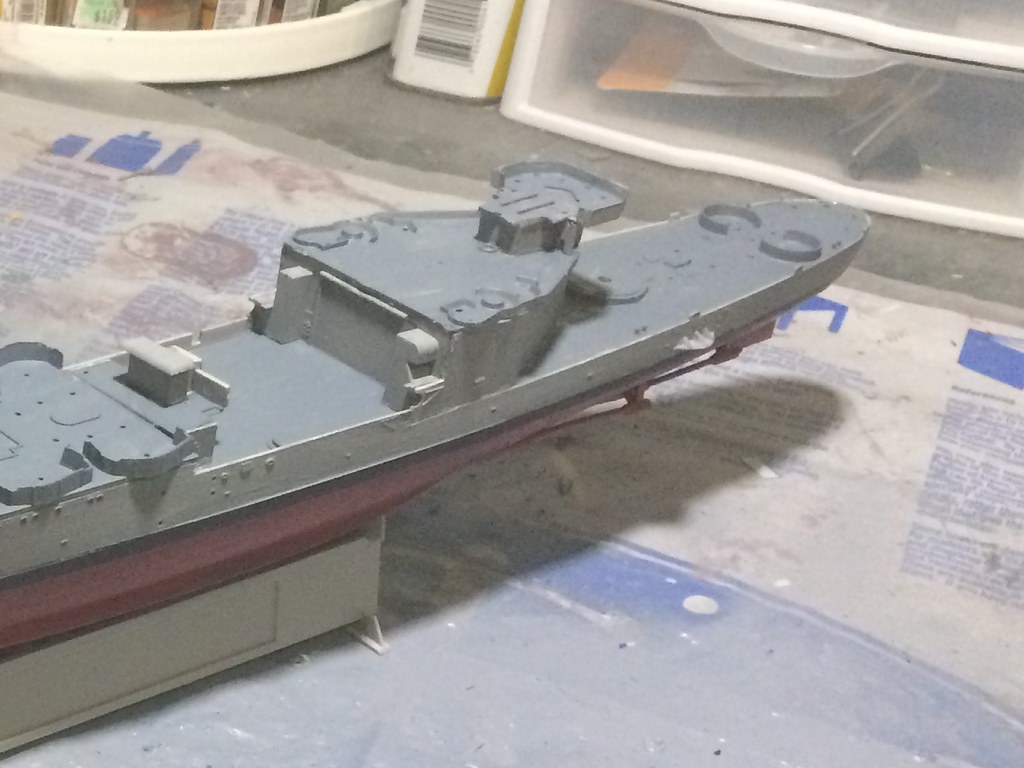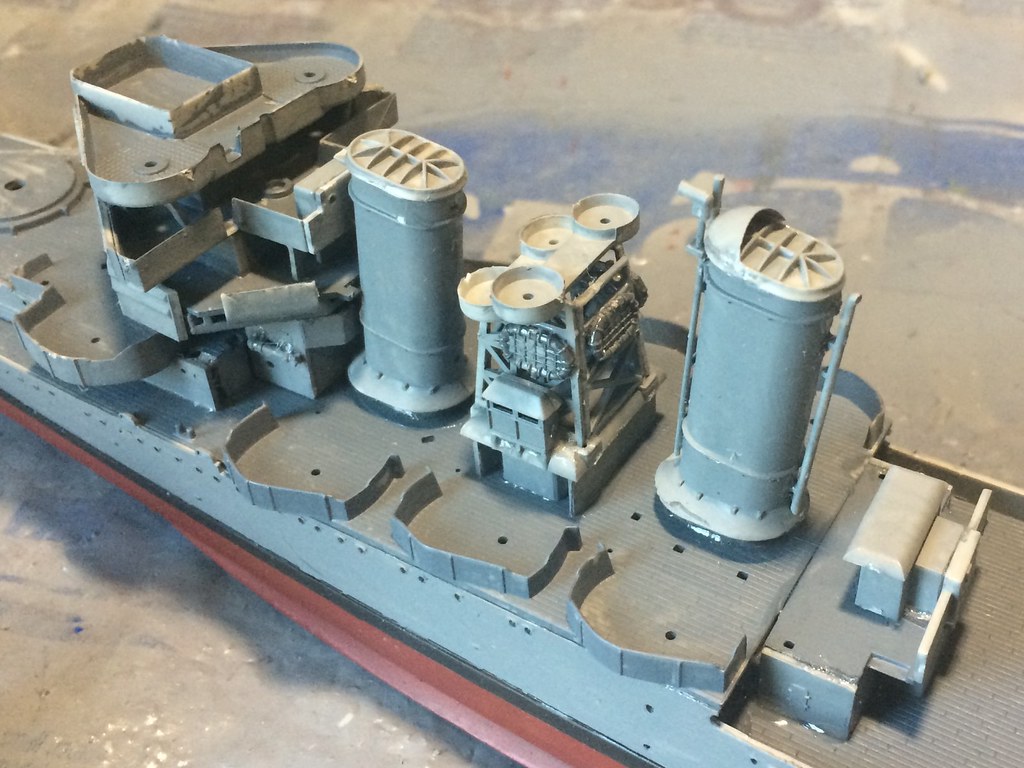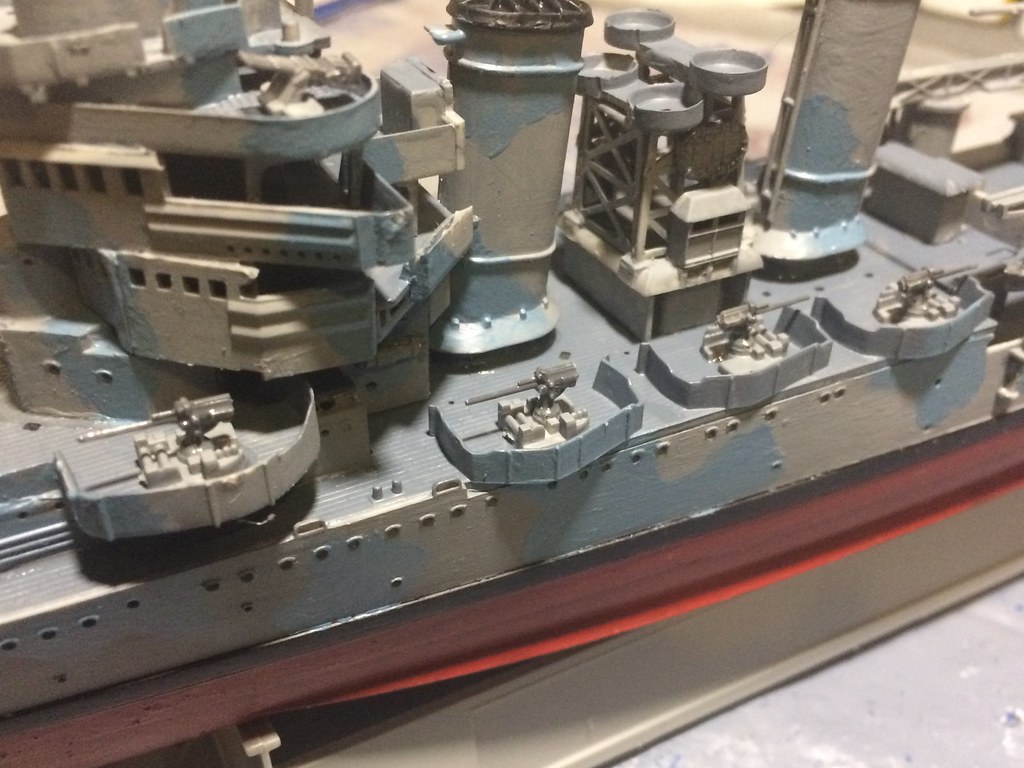@bd popeye @FORBIN @Blackstone @Obi Wan Russell @Air Force Brat @Bernard @Equation @MiragedriverMy Review and Build of Trumpeter Kit #05309, 1/350 New Orleans Class
Heavy Cruiser, USS Vincennes, CA-45 REVIEW & BUILD, Doolittle Raid Vessel
Note: You can see all the pictures in highest resolution at , or you can cloick on any of the pictures here and get a higher resoultion image.

The New Orleans-class cruisers were a class of seven heavy cruisers built for the United States Navy (USN) from 1933–36. All of them were put into commission bb 1938. They were succeeded by the Baltimore Class Heavy cruisers...but the first of those did not commission until several months after the Pearle Harbor, so the New Orleans class were the latest full clas of cruisers that the US had on hand to start the war, along with a couple of other older classes.
These were well built ships, that handled wel;l and were also well armed. They were the direct ancestor for all subsequent USN heavy cruisers. From them came the Brooklyn, Wichita, Cleveland, and the Baltimore-class cruisers. While the Washington Naval Treaty was still being observed, new technology was implemented in the New Orleans class because the USN knew that if and when war came, they would need this knowledge to build ships (which were already in the planning stage) beyond the treaty limits. The USN came to the conclusion that no 10,000-ton cruiser could adequately perform the roles given.
The New Orleans class displaced well over 12,000 tons full load.
As stated they were good ships and they fought well.
However, at the first Battle of Savo Island during the Guadalcanal campaign. three of them, the Astoria, the Quincy, and the Vincennes, accompanied by another cruiser, were suprised by a force of five heavy Japanese cruisers which had just sink one Australian heavy cruiser and damaged and run off another. The three New Orleans class were then set upon, and were defeated in line, one after the other. All three were sunk.
The US learned critical lessons from this debacle.
All he remaining four in class went through extenisve refits in 1942–43 which changed their appearance substantially.
The forward superstructure had the bridge wings cut back, and all of the large size windows were plated in with just a few port holes taking their place. The open bridge above the wheel house was enlarged by 100 percent by extending it forward. In addition several gun tubs were created for the 40 mm Bofors mounts both around the main mast, and aft.
The forecastle deck extended back to the second funnel and the main superstructure was constructed without the ungainly tripod mast seen on the previous cruisers. The bow was a raked type, similar to those of British cruisers. The two funnels were situated closer together with a large search light tower in between. Aircraft handling facilities were moved further aft and a larger second conning station erected above the hangar.
A single mainmast was erected there, between two huge pedestal cranes which handled both spotter planes and small craft. The main 8-inch turrets, although armored, were actually smaller with a more effective angular faceplate. By enlarging the forecastle deck, the secondary battery of 5-inch guns were mounted closer together, facilitating a more efficient ammunition delivery.
Power was provided by eight Babcock & Wilcox high-pressure steam boilers that produced 107,000 hp (79,800 kW) for the four Westinghouse gearing steam turbines. The turbines were shafted to four screws, giving this class a rated speed of 33 knots (61 km/h). The cruisers' range – using 3,269 long tons (3,321 t) of bunker oil – was approximately 14,000 nautical miles (26,000 km) at 10 knots (19 km/h) or 5,280 nautical miles (9,780 km) at 20 knots (37 km/h). Their range could be extended by refueling from a tanker or another ship fitted to transfer oil while underway.
The four remaining in class, USS New Orleans, CA-32, USS Minneapolis, CA-36, USS Tuscaloosa, CA-37, and USS San Francisco, CA-38, fought on through the war and survived. They were all struck in 1959 after over 30 years service, but also after becoming obsoloete in the missile age which the US Navy entered into.
Here were the specifications:
Displacement:
9,950 long tons (10,110 t)
12,463 long tons (12,663 t) (loaded)
Length: 588 ft 2 in (179.27 m)
Beam: 61 ft 9 in (18.82 m)
Draft: 19 ft 5 in (5.92 m)
Propulsion:
4 × Parsons/Westinghouse geared turbines
8 × Babcock & Wilcox boilers
4 × screws
107,000 hp (79,800 kW)
Speed: 32.7 knots (60.6 km/h; 37.6 mph)
Complement: 708 officers and enlisted
Armament:
9 × 8-inch/55 caliber guns
8 × 5-inch/25 caliber guns
4 x 4 40mm cannons
4 x 2 20mm cannons
8 × .50 caliber machine guns
Armor:
Belt 3–5 in (76–127 mm)
Deck 1.25–2.25 in (32–57 mm)
Turrets 1.5–8 in (38–203 mm)
Barbettes 5 in (127 mm) (6.5 in (165 mm) in CA-38)
Conning tower 5 in (127 mm)

I am building this vessel as the USS Vincennes, CA-44, even though it was sold as the USS San Francisco, CA-38..
Vincennes was lai down in January 1934, launched in May 1936, and commissioned into the US Navy in February 1937. She was the last of the New orleans class and the last U.S. cruiser built to the specifications and standards of the Washington Naval Treaty of 1922. Such ships, with a limit of 10,000 tons standard displacement and 8-inch caliber main guns may be referred to as "treaty cruisers." Originally classified a light cruiser when she was authorized, because of her thin armor, Vincennes was reclassified a heavy cruiser, because of her 8-inch guns. At full displacement, because of additions given her, and because the US was suspecting that war was coming, she had a 12,500 ton displacement.
After commissioning, her shakedown cruise which took her to Stockholm, Sweden; Helsinki, Finland; Le Havre, France; and Portsmouth, England.
Last edited:




































